Suzanne Woods Fisher - Amish Peace: Simple Wisdom for a Complicated World
Here you can read online Suzanne Woods Fisher - Amish Peace: Simple Wisdom for a Complicated World full text of the book (entire story) in english for free. Download pdf and epub, get meaning, cover and reviews about this ebook. year: 2009, publisher: Baker Publishing Group, genre: Detective and thriller. Description of the work, (preface) as well as reviews are available. Best literature library LitArk.com created for fans of good reading and offers a wide selection of genres:
Romance novel
Science fiction
Adventure
Detective
Science
History
Home and family
Prose
Art
Politics
Computer
Non-fiction
Religion
Business
Children
Humor
Choose a favorite category and find really read worthwhile books. Enjoy immersion in the world of imagination, feel the emotions of the characters or learn something new for yourself, make an fascinating discovery.
- Book:Amish Peace: Simple Wisdom for a Complicated World
- Author:
- Publisher:Baker Publishing Group
- Genre:
- Year:2009
- Rating:3 / 5
- Favourites:Add to favourites
- Your mark:
- 60
- 1
- 2
- 3
- 4
- 5
Amish Peace: Simple Wisdom for a Complicated World: summary, description and annotation
We offer to read an annotation, description, summary or preface (depends on what the author of the book "Amish Peace: Simple Wisdom for a Complicated World" wrote himself). If you haven't found the necessary information about the book — write in the comments, we will try to find it.
Suzanne Woods Fisher: author's other books
Who wrote Amish Peace: Simple Wisdom for a Complicated World? Find out the surname, the name of the author of the book and a list of all author's works by series.
Amish Peace: Simple Wisdom for a Complicated World — read online for free the complete book (whole text) full work
Below is the text of the book, divided by pages. System saving the place of the last page read, allows you to conveniently read the book "Amish Peace: Simple Wisdom for a Complicated World" online for free, without having to search again every time where you left off. Put a bookmark, and you can go to the page where you finished reading at any time.
Font size:
Interval:
Bookmark:

2009 by Suzanne Woods Fisher
Published by Revell
a division of Baker Publishing Group
P.O. Box 6287, Grand Rapids, MI 49516-6287
www.revellbooks.com
Ebook edition created 2010
Ebook corrections 01.09.2014
All rights reserved. No part of this publication may be reproduced, stored in a retrieval system, or transmitted in any form or by any meansfor example, electronic, photocopy, recordingwithout the prior written permission of the publisher. The only exception is brief quotations in printed reviews.
ISBN 978-1-4412-1088-3
Library of Congress Cataloging-in-Publication Data is on file at the Library of Congress, Washington, DC.
Unless otherwise indicated, Scripture is taken from the HOLY BIBLE, NEW INTERNATIONAL VERSION. NIV. Copyright 1973, 1978, 1984 by International Bible Society. Used by permission of Zondervan. All rights reserved.
Scripture marked KJV is taken from the King James Version of the Bible.
Scripture marked NLT is taken from the Holy Bible, New Living Translation, copyright 1996, 2004. Used by permission of Tyndale House Publishers, Inc., Wheaton, Illinois 60189. All rights reserved.
To protect the privacy of those who have shared their stories with the author, some details and names have been changed.
To my grandfather, Wilbur D. Benedict, born a Dunkard (Old Order German Baptist Brethren), who started his career teaching at Pigeon Hole, a one-room schoolhouse in Franklin County, Pennsylvania, and ended it as publisher of Christianity Today magazine in its early years. His life inspired me to become a writer.
Contents
I am indebted to the works of John Hostetler and Donald Kray-bill and to the people I met in Pennsylvania and Ohio, without whom this book could not have been written. Individuals like Lee and Anita Troup, Don and Elaine Smoot, David Kline, Susie Riehl, Esther Smucker, Erik Wesner, Joel Kime, Dr. Ervin Stutz-man, Glenda Lehman Ervin of Lehmans Hardware, and Annie Schar of Annies Baskets. A special thank-you to Nyna Dolby, friend extraordinaire, for making the time to come with me on an initial trip to Amish America, taking copious notes and pictures. My great appreciation to Joyce Hart, my agent, blessed with the art of making connections. And to editor Andrea Doering, gifted with keen insight.
Throughout this work, proper names, place names, and identifying details have been changed to ensure the privacy of those involved. A few gave permission to use their names. My goal has been to present true stories of the Amish in a way that honors their heritage. If there are any blunders, they are mine. I am grateful to all of the kind Amish people who shared their stories with me. That is the one thing that has stood out for me: the Amish are extraordinarily kind. They go out of their way to help you.
Its easy to get distracted by the buggies and beards, but the Amish arent all that different from us. As artist Susie Riehl said, People think the Amish are perfect. Were not. Were the same as anybody. We all need the Lord. At its ideal, the Amish way of life does seem closer to the heart of Christianity, emphasizing tenets of our faith that really matter. Tenetslike turning the other cheek, loving our neighbors, living simply so others may simply livewe may be in danger of neglecting.
It seems the Plain People, in many ways, are not so plain after all.
Introduction
Become Amish?
Do you feel peacetrue, inner peaceonly in spurts? I do.
My faith is very important to me. I love the Lord, I pray often, I study the Bible, but still, peace of mind often eludes me.
Why is that? Am I missing something? Jesus made a promise to give believers an abiding peace. Peace I leave with you; my peace I give you. I do not give to you as the world gives. Do not let your hearts be troubled and do not be afraid (John 14:27).
So why is it that peace often feels elusive, like trying to package fog?
Clearly, Jesus indicates that the peace he offers is different from that which believers can find in the world. Christ meant for our hearts to be anchored in peace. Set firmly in place. Unyielding.
Yet for me, and maybe for you, peace is fleeting, not a constant state of mind.
Perhaps the reason is that I rely on the wrong kind of peace one that is based on circumstances in life all lining up properly, like ducks in a row, which is seldom. Jesus peace means my heart should not be troubled. But, often, I do feel troubled. Especially when what-ifs? bounce like popcorn in my mind. Jesus peace means that I shouldnt be afraid. But, often, I do fear the future. Lying in bed at night, staring up at the ceiling, I know that no household is entirely safe from natural disaster, fire or theft, stock market crashes or personal suffering. The world, even in a best-case scenario, can only offer a troubled peace.
The truth is that bad things do happen, despite our best efforts to stay safe. There is no guarantee for total security in any area of life. Thats why peace as the world gives doesnt offer staying power. The only people I have ever known who seem to have a handle on abiding peace are my relatives, members of the Dunkard Brethren Church. Similar to the Amish but not as strict or as isolated, my Dunkard cousins embody Christs instruction to live in the world but not of it. They wear plain, modest clothing, with their trademark bonnets and horseshoe beards, and live in colonies scattered around the country.
The roots of the Anabaptist movement reach back to sixteenth-century Europe. A group of religious radicals rejected the common practice of infant baptism and, instead, affirmed an adults believers baptism. Descendants of the Anabaptist movement are known as the Amish, Mennonites, Hutterites, Church of the Brethren, and Brethren in Christ.
A common element among these groups is their emphasis on developing character, honoring God, avoiding temptation and sin, and living plain. But the peaceful countenance of the Anabaptists runs much deeper than living a simple lifestyle.
There was a time when my cousin Doug and his wife, Mina, sought treatment at Stanford University for their little boy, born with a genetic defect. Since we lived close to the hospital, Doug and Mina stayed with my family now and then. Their peace of mind never wavered, carrying them through the slow and sad death of their firstborn child. They grieved, to be sure, but held confidence in Gods sovereignty. Even as a teenager, I sensed I was witnessing something extraordinary.
The Anabaptist communities may seem old-fashioned, but when it comes to living with an abiding peace, they are far beyond most of us living a frazzled, fast-paced modern life.
So is the answer to living with an abiding peace to go Amish? Some think so.
An Amish newspaper ran a story about the hundreds of letters they received asking how to become Amish. The article explained that most people wanted a change of pace or were feeling stressed by their hectic lifestyle. The solution, they thought, was to become Amish.
The newspaper conjectured that most likely, they wouldnt last a day in the Amish lifestyle. One cold winter ride in a buggy would send them scurrying to get home, happy to flip on the car heater and switch on the radio.
Uncle Amos, an Amish man who wrote occasionally for the Small Farmers Journal, wrote this thought-provoking response:
Become Amish?
If you admire our faith, strengthen yours. If you admire our sense of commitment, deepen yours. If you admire our community spirit, build your own. If you admire the simple life, cut back. If you admire deep character and enduring values, live them yourself.
Next pageFont size:
Interval:
Bookmark:
Similar books «Amish Peace: Simple Wisdom for a Complicated World»
Look at similar books to Amish Peace: Simple Wisdom for a Complicated World. We have selected literature similar in name and meaning in the hope of providing readers with more options to find new, interesting, not yet read works.
Discussion, reviews of the book Amish Peace: Simple Wisdom for a Complicated World and just readers' own opinions. Leave your comments, write what you think about the work, its meaning or the main characters. Specify what exactly you liked and what you didn't like, and why you think so.

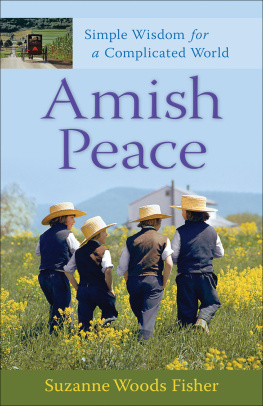
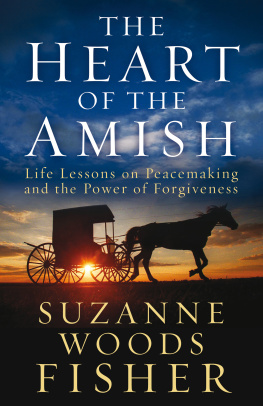





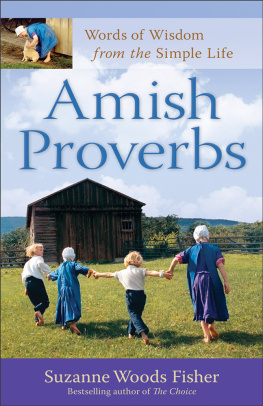

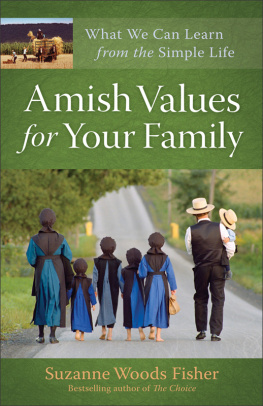
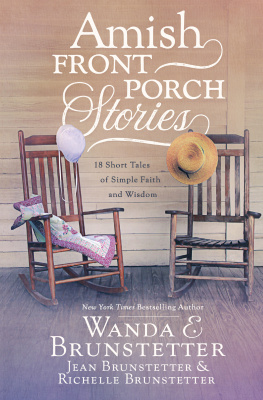
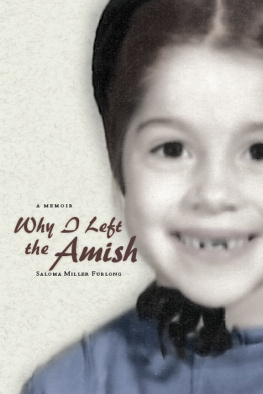


![Beverly M Lewis] - The Beverly Lewis Amish Heritage Cookbook](/uploads/posts/book/96304/thumbs/beverly-m-lewis-the-beverly-lewis-amish-heritage.jpg)
